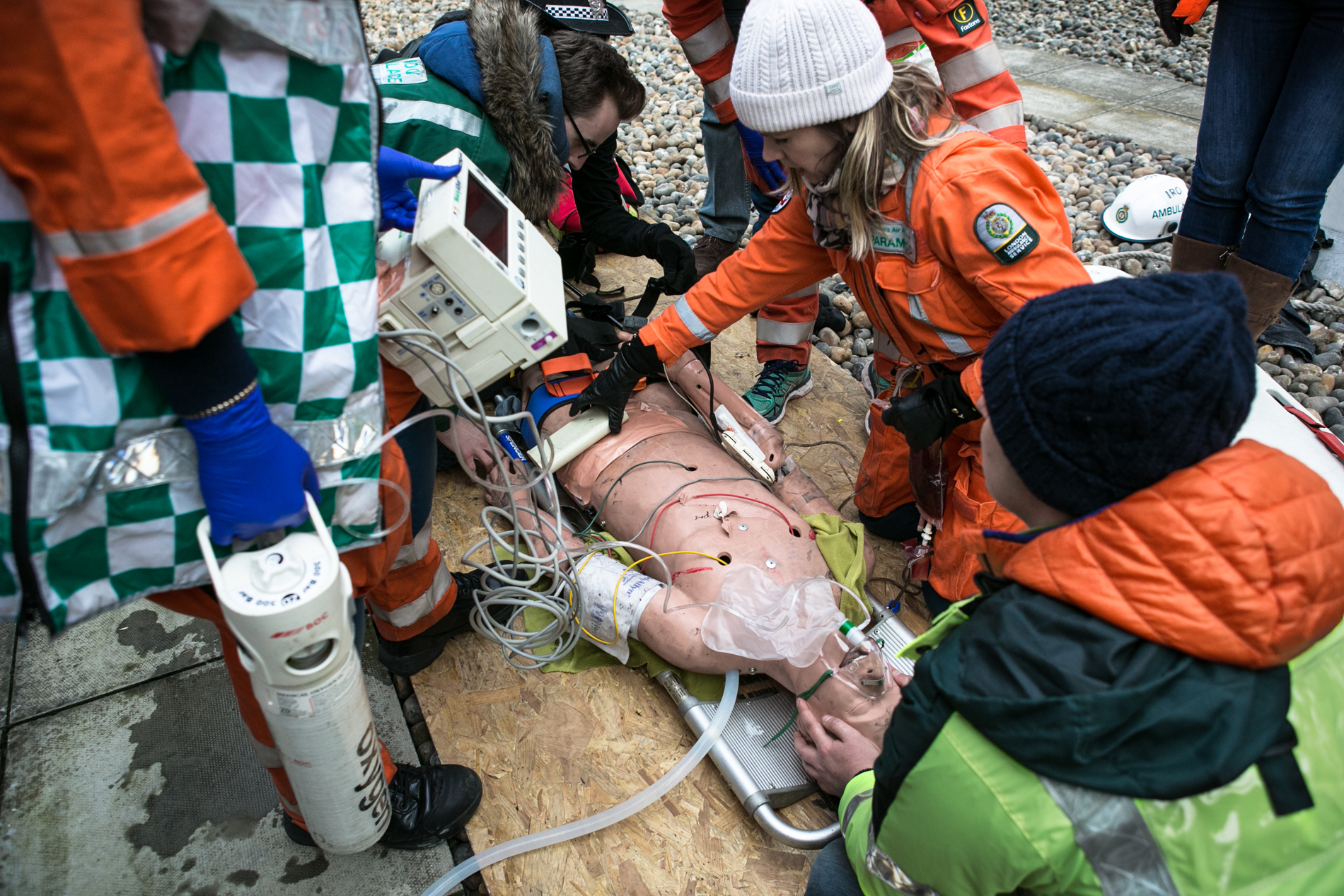
A collaboration for innovation in emergency medicine.
We bring together specialists in pre-hospital care and designers, to look at ways to better design the way we care for people in emergency situations. We look at the way we train future doctors, workflow, stress management and procedures. How can we improve the whole system, to save more people’s lives?
MFA student: Susanne Duswald
Around 4.8 Million people die because of their trauma injuries each year and over 35% never reach the hospital in time because they bleed to death at the scene. What can doctors do to stop the bleeding on site?
There is a method from the 1950s, called “Resuscitative Endovascular Balloon Occlusion of the Aorta”, where the doctor inserts a balloon catheter into the femoral artery (inside the leg) of the patient and clogs the aorta with the inflated balloon. This method is very effective and can save many lives, but it’s very difficult to use in the unpredictable pre-hospital environment. Only a handful of emergency professionals worldwide feel confident enough to use this method.
Can we reduce the complexity of the REBOA kit to make it a more effective procedure?

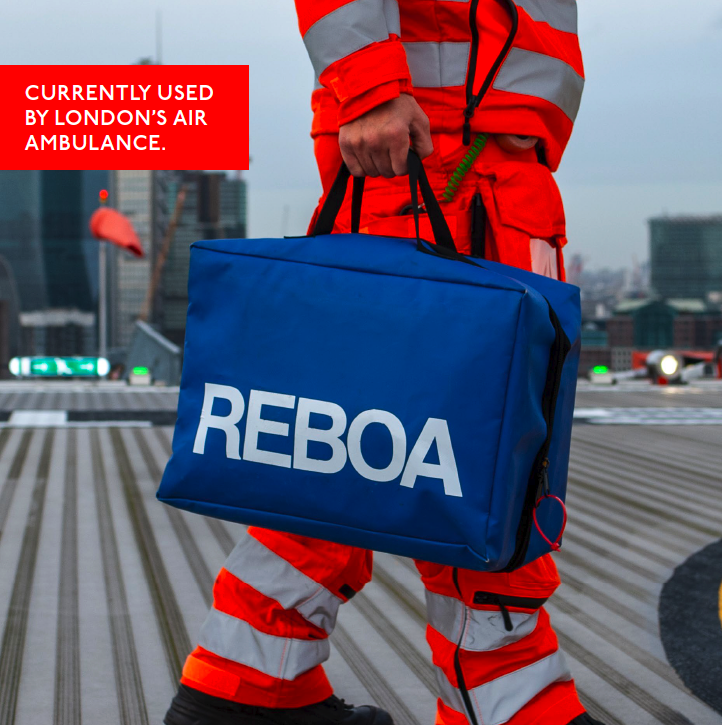
BA Student: Hal Dubuisson
This design is based on the layout of a book, intuitively guiding the user to the next piece of equipment. This concept aims to reduce stress and saves crucial time when performing the REBOA procedure.
The layout of the kit simplifies the performance of REBOA by presenting equipment in a logical order and integrating instructions into the design. With secure equipment storage, durability, and a reduction in on-site waste, the kits can be used in all types of environments.

MFA student: Chris Zobl
Designing for Prehospital Care Training
This project explored how prehospital care training can be altered to improve mental proficiency for emergency medical professionals. The London Air Ambulance performs a complex life-saving procedure known as REBOA (Resuscitative Endovascular Balloon Occlusion of the Aorta) on the roadside; the only emergency medical service to do so worldwide. Teams consisting of a doctor-paramedic pairing are required to perform at their peak in extreme environments, making training for such circumstances crucial. As a result, this project strategically maps current mental processes into a framework, identifying multiple design opportunities to approach chaotic accident scenes. The framework acts as the basis for defining a curriculum, which, using Instructional Design principles, develops into a learning programme that highlights how learners experience training activities to modify communication habits and on-scene behaviour.
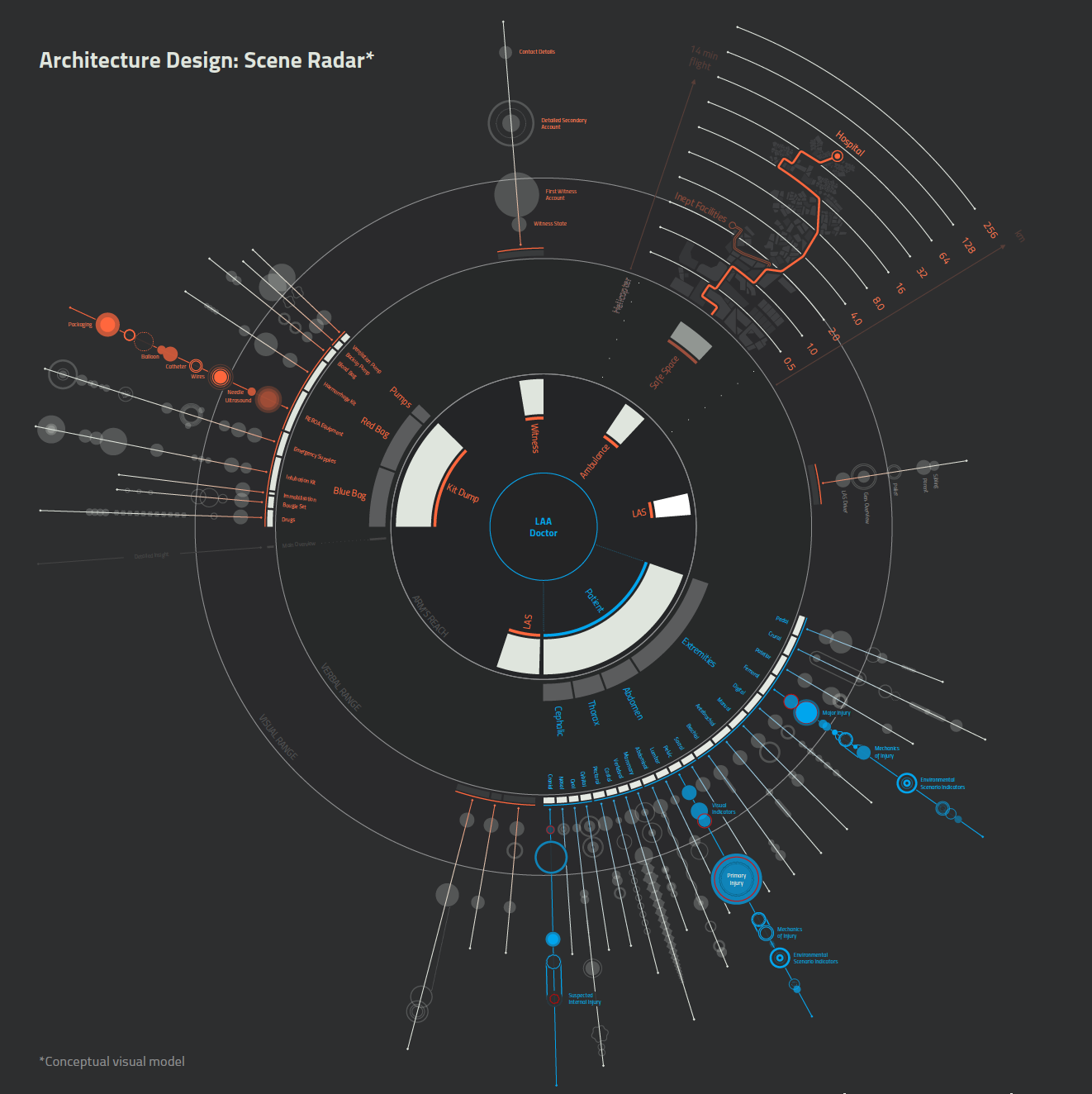
BA student: Ruby Edwards
Development of an alternative REBOA training simulation tool. It aims to match the medical performance of existing solutions whilst being more robust, as well as faster, cheaper and more intuitive to set up. A specific focus on developing realistic skin that can be ‘home-made’ and re-used many times.
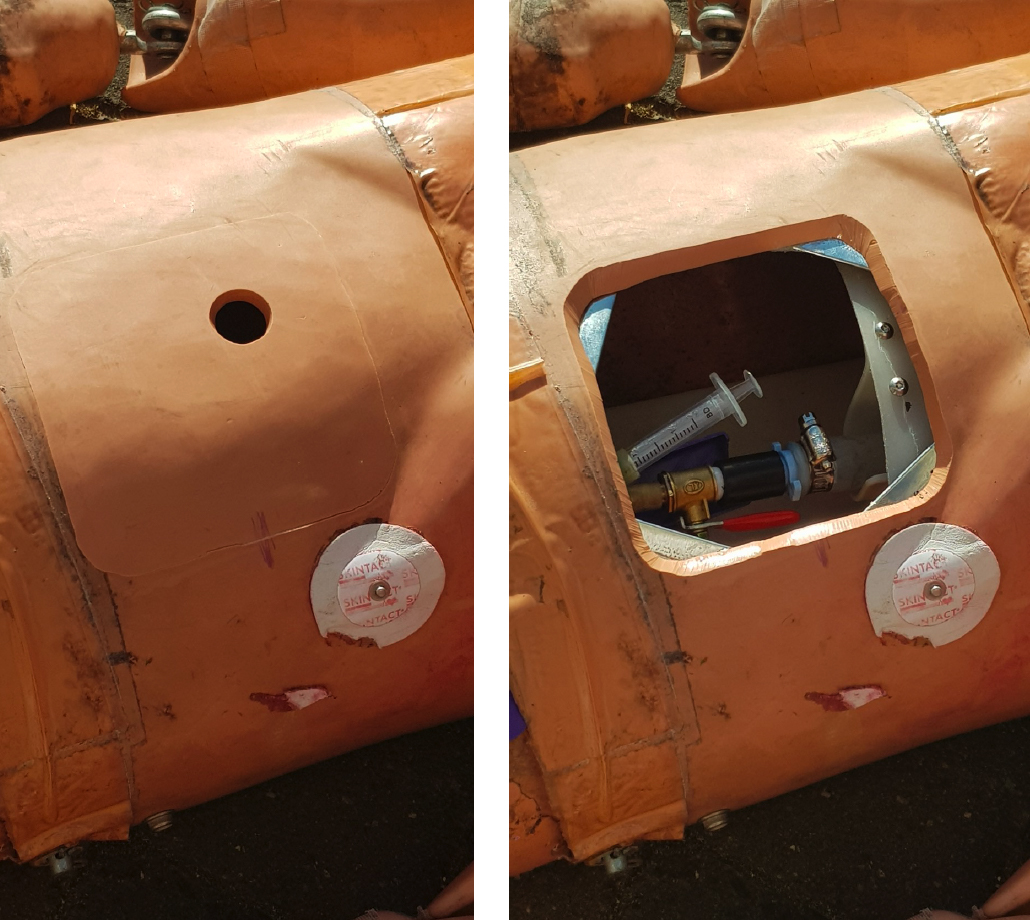
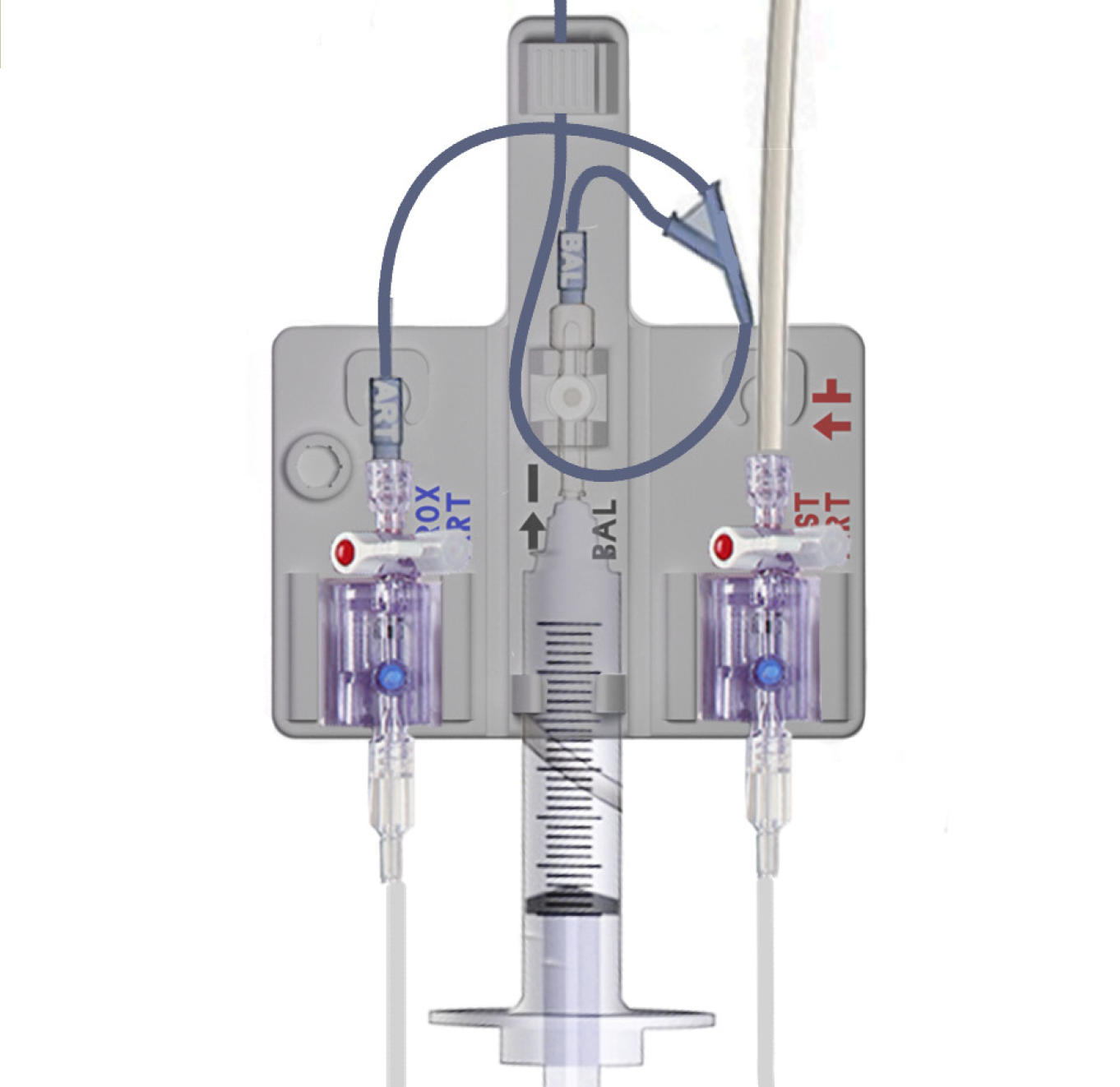
BA Student: Toby Webber
The CAP or Compact All-condition Pre-hospital device is a medical s olution allowing existing REBOA equipment to be used in pre-hospital procedures. It replaces current practises of adapting the kit for outdoor use, resulting in a procedure that is safe and easier to perform.
The design is a small appliance that attaches to the thigh of the patient with a Velcro strap. The two pressure transducers, Distal and Proximal are slotted onto the appliance to be secured on the body. The BAL stop cock and syringe are also clipped to the product to keep equipment organised. Once the catheter is inserted into the body, it can be held in place with the catheter clip preventing migration in transit to the operating theatre.



